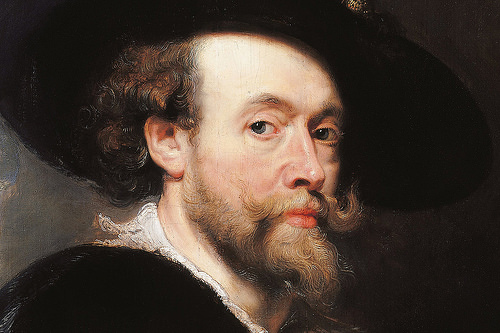
Peter Paul Rubens
The Rubenshuis ("Rubens House") is a museum showcasing the extraordinary artworks of Peter Paul Rubens (1577–1640), it is also his former home and studio.
Rubens's house during his lifetime
A year after marrying Isabella Brant in 1609, Rubens began construction on an Italian-style villa on the Vaartstraat, at the time located on the banks of the canal Herentalse Vaart. Rubens designed the building himself, based on studies of Italian Renaissance palace architecture that also formed the basis of his Palazzi di Genova. The layout included his home, studio, a monumental portico and an interior courtyard. The courtyard opens into a Baroque garden that he also planned.
In the adjacent studio he and his students executed many of the works for which Rubens is famous. He had established a well-organised workshop that met the demands of his active studio, including large commissions from England, France, Spain and Bavaria and other locations. He relied on students and collaborators for much of the actual work. Rubens himself, however, guaranteed the quality and often finished paintings with his own hand. In a separate private studio he made drawings, portraits and small paintings without the assistance of his students and collaborators.
Rubens's house after his lifetime
Rubens spent most of his lifetime in this palace. After his death, his wife Helena Fourment rented the building to William Cavendish and his wife. After the Cavendishes left in 1660, the house was sold.
The city bought the house in 1937, and after an extensive restoration the Rubenshuis was opened to the public in 1946. Dozens of paintings and artworks by Rubens and his contemporaries were installed in the rooms, as well as period furniture. Paintings include his early Adam and Eve (c. 1600) and a self portrait made when he was about fifty.
The Rubenianum, a centre dedicated to the study of Rubens, is in a building at the rear of the garden.
Explore Belgium and it's spectacular history on one of our selected Tours of Belgium